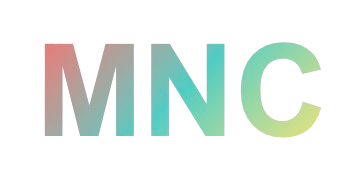Description
The U.S.-Mexico border is lined with border patrol agents and an entire assembly of smart bordering technologies to surveil it. One of the areas that lines this border is the Arizona desert, an area that is hot and excruciating for forced migrants to travel through. People want to help the forced migrants in need, but are discouraged from doing so. This is still the case today, with people getting arrested if they are seen assisting migrants along the border, such as giving them water.
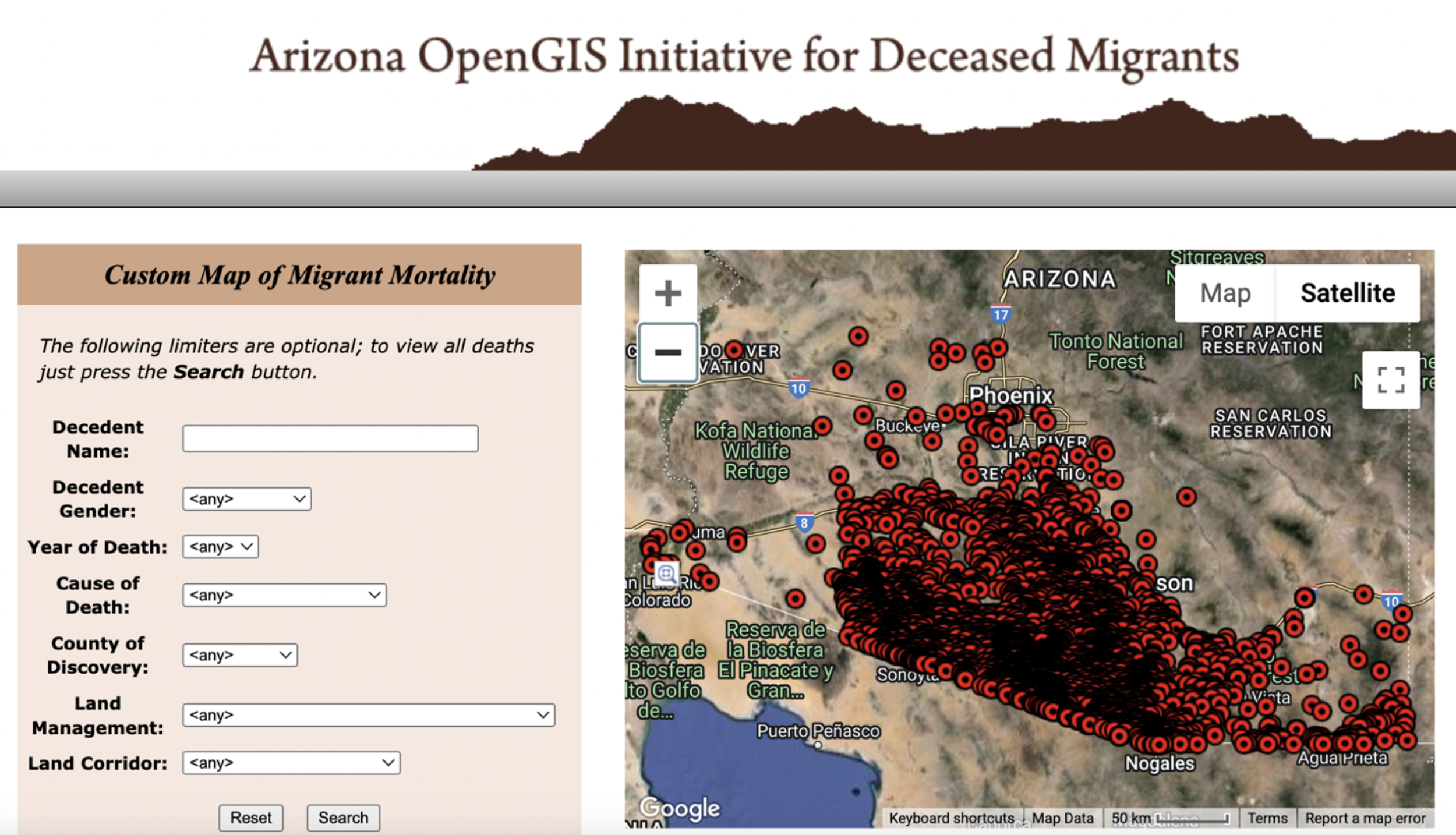
In 2001, Pima County, a non-profit organization called Humane Borders, collaborated with the University of Arizona’s Binational Migration Institute and developed the Arizona OpenGIS Initiative for Deceased Migrants. This is a freely available online mapping tool viewable from a web browser that shows where human remains of deceased migrants were found along the U.S.-Mexico border. It provides information about deceased migrants, such as the migrants name, gender, where they died, and so on. On the map, deceased migrants are represented as red dots. In areas with a copious amount of deaths, the individual dots merge into a mass of darkness, with some of it looking black. As of writing this, the project is still live and actively maintained.
In 2004, U.S. artist John Craig Freeman took the data from the Arizona OpenGIS Initiative to create the app Border Memorial: Frontera de los Muertos. This is an augmented reality and location-based app that you can download and use in the U.S. Southwest Desert. Once there, a user can aim their device’s camera at the landscape border and the surrounding desert. When the phone is aimed at the precise GPS coordinates of the recorded migrants’ remains, a skeleton appears. Users can walk around the skeleton from multiple perspectives before it floats to the sky a few seconds later. When the skeleton is gone, a text is displayed on the mobile screen to inform users how many remains were found in each skeleton location. These skeletons are designed to look like calacas (skeletons), which are the most recognizable symbol of a Mexican holiday, Día de los Muertos (Day of the Dead). The holiday originally comes from Aztec beliefs that death should be celebrated. This project is meant to follow that tradition for deceased migrants who rarely receive a proper burial or ceremony.
Freeman later added the locations of the remains onto Google Earth, allowing people not in the desert to experience the fate of deceased migrants. With Google Earth, users are able to have a birds-eye view and a street view, where the user can place their avatar in the desert and digitally experience the Border Memorial.
The Border Memorial project is another example that combines aesthetics and politics by making visible the forced migrants who have died along the Mexico-U.S. border as they tried to cross in search of better work opportunities. This project is an intervention that invites the public to learn more about areas that have been overlooked.
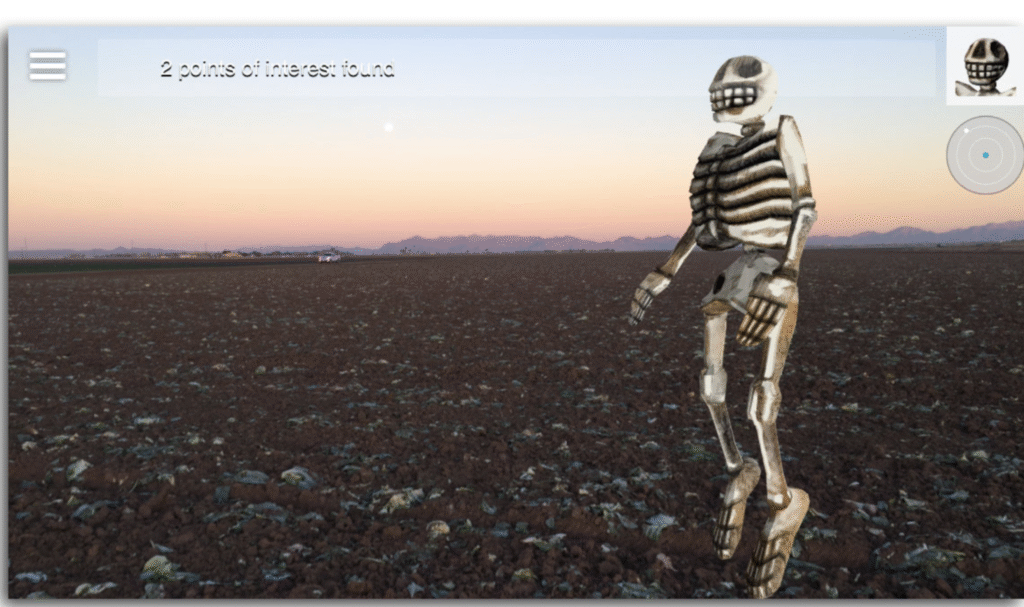
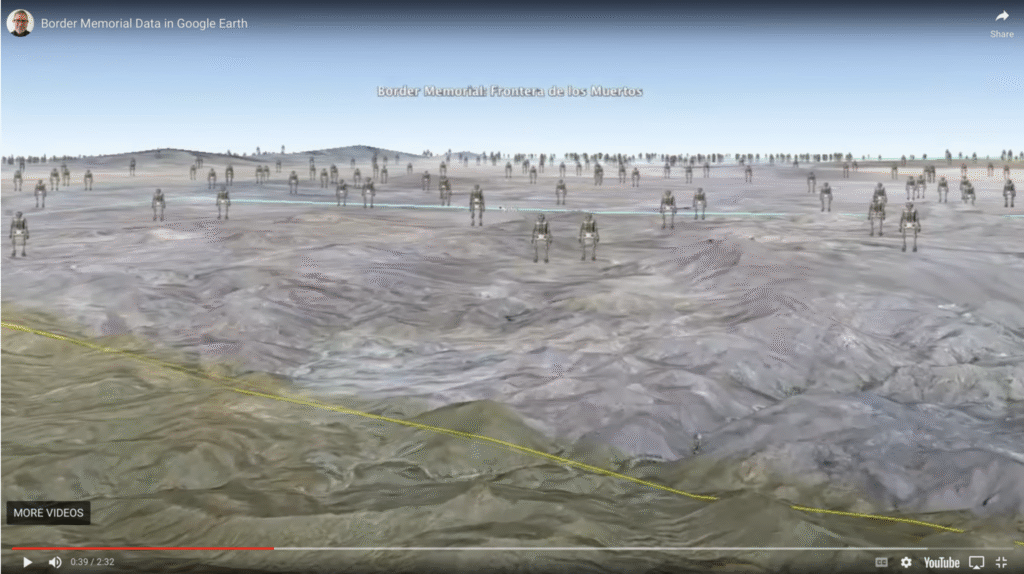
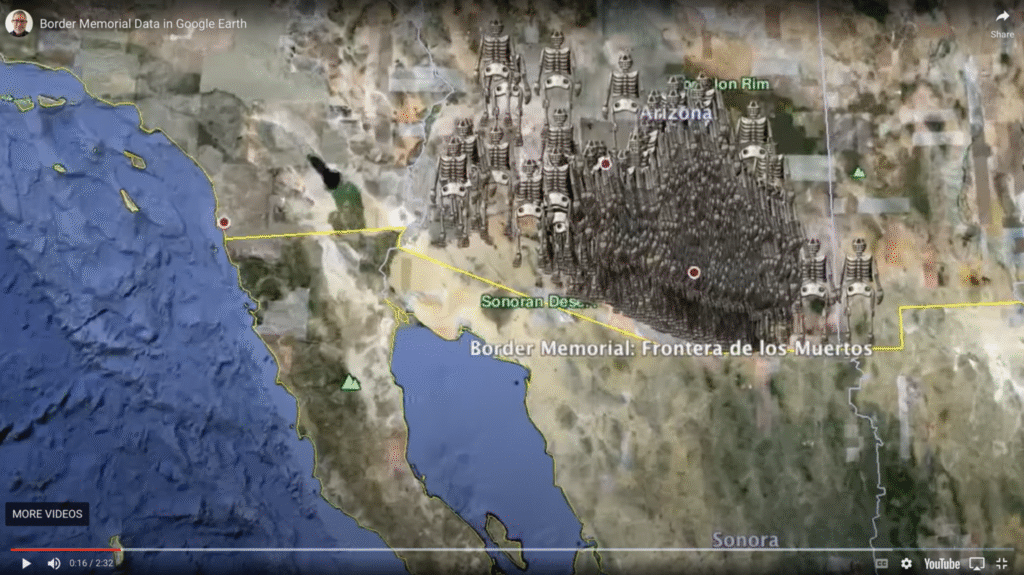
Connection to Mobile Networked Creativity
This is another example of Mobile Networked Creativity that combines existing technologies with a well-known visual. This invites the public to learn about the area and the deceased migrants who have been overlooked and unnoticed. The Border Memorial is a form of artistic civic engagement that uses Mobile Networked Creativity to invite the public to come together and to better understand their relationship with their living spaces. In turn, it allows the project to potentially change the users’ perspectives by connecting them to information about the Arizona desert– a highly patrolled public space and a location of deeply differential mobilities.
Location
The U.S. Southwest desert, along the U.S.-Mexico border, particularly in Arizona. The project is also virtually accessible via Google Earth
To learn More
- Pima County, “Custom Map of Migrant Mortality,” Arizona OpenGIS Initiative for Deceased migrants, 2001.
- Tamara Vukov and Mimi Sheller, “Border Work: Surveillant Assemblages, Virtual Fences, and Tactical Counter-Media,” Social Semiotics 23, no. 2 (April 2013): 225–41.
- Mai Nou Xiong-Gum, “Distributed Agency in Hybrid Space: Understanding the Digital Media Practices of Forced Migrants and Hybrid Mobilities” (Doctoral Dissertation, Raleigh, North Carolina State University, 2020).
- “Border Memorial Slideshow,” Hyperrhiz 12: Mapping Cultures.
- John Craig Freeman, “Border Memorial: Frontera De Los Muertos,” Public Art Dialogue 3, no. 1 (March 1, 2013): 129.
- John Craig Freeman and Jessica Auchter, “Border Memorial: Frontera de los Muertos,” Hyperrhiz: New Media Cultures, 2015.
